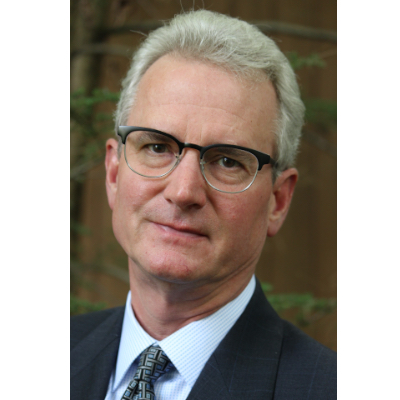2024 New Hampshire primary:
- New Hampshire is an 83% match with U.S. demographics
- The New Hampshire primary correctly predicts 82% of Republican nominees
- The New Hampshire primary correctly predicts 55% of Democratic nominees
It’s primary season, and New Hampshire is first on the electoral docket — as usual. Like the Iowa caucuses that precede it, the New Hampshire primary routinely invites a storm of media attention both for what some criticize as “unfairly” holding the earliest position in the primary-election cycle as well as reliably forecasting the GOP and Democratic nominees — with 82% and 55% accuracy, respectively.
The impressive predictive abilities of the New Hampshire primary are quite surprising, given the fact that the state is largely rural with a relatively tiny and demographically homogeneous population. Ahead of the primary election on January 23, WalletHub compared the Granite State’s demographic characteristics and stances on various issues with those of the U.S. as a whole using 22 metrics, to contextualize the primary results with the voter base.

Cassandra Happe, WalletHub Analyst
Main Findings
Resemblance Index
100% for a particular metric fully matches the national value.
|
Metric Name |
Resemblance Index |
|---|---|
| Sociodemographic | 81.56% |
| Gender | 99.20% |
| Age | 88.00% |
| Race | 41.10% |
| Family Relationship | 90.10% |
| Health Insurance Coverage | 94.20% |
| Place of Birth | 84.60% |
| Economics | 88.97% |
| Poverty Rate | 91.20% |
| Wealth Gap | 76.90% |
| Food Stamp Entitlement of Households | 89.02% |
| Number of Part-Time Employees for Every 100 Full-Time Employees | 95.49% |
| Unemployment Rate | 98.90% |
| Length of Average Workweek | 99.74% |
| Education | 91.31% |
| Educational Attainment | 89.00% |
| School Enrollment | 93.62% |
| Religion | 62.14% |
| Religious Composition of Adults | 60.28% |
| Importance of Religion in One's Life among Adults | 64.00% |
| Public Opinions | 90.85% |
| Party Affiliation among adults | 96.00% |
| Political Ideology among Adults | 86.60% |
| Views about Abortion among Adults | 92.00% |
| Should there be more restrictions on the current process of purchasing a gun? | 88.81% |
| OVERALL | 82.97% |
Percentage of New Hampshire Primary Winners Who Received the Party Nomination
Note: The above chart was generated using data from 1976 for Democratic and Republican party nominees. We took into account only races in which at least two candidates were on the ballot.
In-Depth Look at How Well New Hampshire Voters Represent the U.S.
General Demographics
New Hampshire is nearly identical (97% to 99% similarity) to the U.S. as a whole when it comes to gender, age, and family composition. Where things differ greatly, though, is the state’s racial makeup. For example, the overall U.S. population is about 59% white, whereas the share in New Hampshire is over 88%, a very stark difference. Black residents only make up around 1% of the Granite State’s population, compared to 12% of the U.S.
When it comes to education, there is not a huge difference between New Hampshire residents and Americans as a whole, although people in New Hampshire are slightly more educated than the average American, with larger shares of people with advanced college degrees and a smaller percentage of people who didn’t finish high school.
New Hampshire is significantly less religious than the rest of the U.S., though. The share of people who don’t identify with any specific religion is nearly 73%, compared to roughly 54% for the U.S. as a whole. New Hampshire has a significantly smaller share of evangelical protestants than the rest of the country, and slightly smaller shares of most other religious groups.
Economic Factors
New Hampshire’s economic environment is very similar to the U.S. overall when it comes to factors like employment, the poverty rate, and annual income. There is a notable mismatch when it comes to the wealth gap, though, which is the difference between the mean household income of the richest fifth of the population and the poorest. This gap is close to 4% lower in New Hampshire than in the U.S. as a whole, which means that its residents are a bit more equal when it comes to wealth than other Americans.
Political Opinions
Around 40% of New Hampshire residents are Republicans and 43% are Democrats, which is about 2% more Republican and 2% less Democratic than the country as a whole. The share of people not affiliated with either of the two major parties is the same in New Hampshire as it is in the U.S. as a whole, at 17%.
When it comes to major issues in the 2024 election, New Hampshire residents skew slightly more liberal in some areas and slightly more conservative in others. They are about 4% more likely to think abortion should be legal in most or all cases, but close to 6% less likely to say they support more restrictions on gun ownership.
Detailed Findings
|
Metric Name |
New Hampshire Value |
U.S. Value |
Resemblance Index |
|---|---|---|---|
| Sociodemographic | Info | Info | 81.56% |
| Gender | Info | Info | 99.20% |
| % of Male | 49.99% | 49.59% | Info |
| % of Female | 50.01% | 50.41% | Info |
| Age | Info | Info | 88.00% |
| % of Population Younger than Age 19 | 21.40% | 24.80% | Info |
| % of Population Between Ages 20 & 24 | 6.40% | 6.70% | Info |
| % of Population Between Ages 25 & 34 | 12.60% | 13.70% | Info |
| % of Population Between Ages 35 & 44 | 11.80% | 12.90% | Info |
| % of Population Between Ages 45 & 54 | 13.20% | 12.40% | Info |
| % of Population Between Ages 55 & 64 | 15.70% | 12.90% | Info |
| % of Population Aged 65 & Older | 19.00% | 16.50% | Info |
| Race | Info | Info | 41.10% |
| % of White Population | 88.30% | 58.90% | Info |
| % of Black or African American Population | 1.30% | 12.10% | Info |
| % of American Indian or Alaskan Population | 0.10% | 0.60% | Info |
| % of Asian Population | 2.60% | 5.70% | Info |
| % of Native Hawaiian or Other Pacific Population | 0.00% | 0.20% | Info |
| % of Other Population | 3.40% | 3.90% | Info |
| % of Hispanic Population | 4.30% | 18.70% | Info |
| Family Relationship | Info | Info | 90.10% |
| % of Population Who Are Householders | 40.70% | 38.90% | Info |
| % of Population Who Are Spouses (in Households) | 21.10% | 18.50% | Info |
| % of Population Who Are Children (in Households) | 26.40% | 29.40% | Info |
| % of Population Represented by Other Relatives (in Households) | 4.80% | 7.10% | Info |
| % of Population Represented by Nonrelatives (in Households) | 3.20% | 3.40% | Info |
| Health Insurance Coverage | Info | Info | 94.20% |
| % of Population with Health Insurance Coverage | 94.20% | 91.30% | Info |
| % of Population without Health Insurance Coverage | 5.80% | 8.70% | Info |
| Place of Birth | Info | Info | 84.60% |
| % of Foreign-Born Population | 6.00% | 13.70% | Info |
| % of Native Population | 94.00% | 86.30% | Info |
| Economics | Info | Info | 88.97% |
| % of Population with the Following Household Income Levels | Info | Info | 82.90% |
| Less than $25,000 | 11.20% | 15.70% | Info |
| $25,000 – 34,999 | 6.00% | 7.40% | Info |
| $35,000 – 49,999 | 9.00% | 10.70% | Info |
| $50,000 – $74,999 | 15.10% | 16.10% | Info |
| $75,000 – $99,999 | 13.10% | 12.80% | Info |
| $100,000 – $149,999 | 19.90% | 17.10% | Info |
| $150,000 or More | 25.60% | 20.20% | Info |
| Poverty Rate | Info | Info | 91.20% |
| % of Families in Poverty | 4.40% | 8.80% | Info |
| % of Families Above Poverty Line | 95.60% | 91.20% | Info |
| Wealth Gap | 12.94% | 16.82% | 76.90% |
| Food Stamp Entitlement of Households | Info | Info | 89.02% |
| % of Households Receiving Food Stamps | 6.03% | 11.52% | Info |
| % of Households not Receiving Food Stamps | 93.97% | 88.48% | Info |
| Number of Part-Time Employees for Every 100 Full-Time Employees | 42.87% | 44.89% | 95.49% |
| Unemployment Rate | 2.50% | 3.60% | 98.90% |
| Length of Average Workweek | 38.60% | 38.70% | 99.74% |
| Civilian Employed Population Aged 16 Years & Older by Industry | Info | Info | 89.00% |
| Agriculture, Forestry, Fishing and Hunting, and Mining | 0.70% | 1.60% | Info |
| Construction | 7.10% | 6.90% | Info |
| Manufacturing | 13.00% | 10.00% | Info |
| Wholesale Trade | 2.40% | 2.40% | Info |
| Retail Trade | 12.10% | 11.00% | Info |
| Transportation and Warehousing, and Utilities | 3.90% | 5.80% | Info |
| Information | 2.00% | 1.90% | Info |
| Finance and Insurance, and Real Estate and Rental and Leasing | 6.30% | 6.70% | Info |
| Professional, Scientific, and Management, and Administrative and Waste Management Services | 11.80% | 12.10% | Info |
| Educational Services, and Health Care and Social Assistance | 24.40% | 23.30% | Info |
| Arts, Entertainment, and Recreation, and Accommodation and Food Services | 8.20% | 9.00% | Info |
| Other Services, except Public Administration | 4.20% | 4.70% | Info |
| Public Administration | 4.00% | 4.70% | Info |
| Education | Info | Info | 91.31% |
| Educational Attainment | Info | Info | 89.00% |
| % of People Aged 25 & Older with a Bachelor’s Degree or Higher | 39.10% | 34.30% | Info |
| % of People Aged 25 & Older with Some College Experience or Associate's Degree | 27.60% | 28.40% | Info |
| % of People Aged 25 & Older Who Are High School Graduates | 27.20% | 26.40% | Info |
| % of People Aged 25 & Older Who Did Not Complete High School | 6.20% | 10.80% | Info |
| School Enrollment | Info | Info | 93.62% |
| % of Population Aged 3 & Older Enrolled in School | 21.94% | 25.13% | Info |
| % of Population Aged 3 & Older not Enrolled in School | 78.06% | 74.87% | Info |
| Religion | Info | Info | 62.14% |
| Religious Composition of Adults | Info | Info | 60.28% |
| Evangelical Protestant | 4.84% | 16.50% | Info |
| Mainline Protestant | 4.13% | 5.20% | Info |
| Black Protestant | 0.02% | 2.20% | Info |
| Catholic | 15.99% | 18.70% | Info |
| Orthodox | 0.35% | 0.40% | Info |
| Other Adherents | 1.50% | 0.10% | Info |
| Islam | 0.09% | 1.30% | Info |
| Judaism | 0.25% | 0.60% | Info |
| Hinduism | 0.05% | 0.40% | Info |
| Buddhism | 0.02% | 0.30% | Info |
| Unclaimed Population | 72.76% | 54.30% | Info |
| Importance of Religion in One's Life among Adults | Info | Info | 64.00% |
| % Very religious | 23.00% | 37.00% | Info |
| % Moderately religious | 26.00% | 30.00% | Info |
| % Nonreligious | 51.00% | 33.00% | Info |
| Public Opinions | Info | Info | 90.85% |
| Party Affiliation among adults | Info | Info | 96.00% |
| Republican/lean Rep. | 40.00% | 38.00% | Info |
| Democrat/lean Dem. | 43.00% | 45.00% | Info |
| No lean | 17.00% | 17.00% | Info |
| Political Ideology among Adults | Info | Info | 86.60% |
| Conservative | 30.00% | 33.60% | Info |
| Moderate | 41.00% | 34.30% | Info |
| Liberal | 28.00% | 28.20% | Info |
| Don’t know | 1.00% | 3.90% | Info |
| Views about Abortion among Adults | Info | Info | 92.00% |
| Legal in all/most cases | 69.00% | 65.00% | Info |
| Illegal in all/most cases (including Don't know) | 31.00% | 35.00% | Info |
| Should there be more restrictions on the current process of purchasing a gun? | Info | Info | 88.81% |
| Yes | 60.75% | 66.35% | Info |
| No | 33.86% | 33.65% | Info |
| Other | 5.39% | 0.00% | Info |
| OVERALL | Info | Info | 82.97% |
Ask the Experts
Over the years, New Hampshire has received incessant heat from critics for being the top primary-election state, along with Iowa, despite its population’s racial uniformity. Based on that fact, should it remain the first primary — second if the Iowa caucuses are considered first — to lead off the presidential-nominating contest? We turned to a panel of experts for answers. Click on the experts’ profiles to read their bios and thoughts on the following key questions:
- Does it make sense to have New Hampshire be the second primary contest given that its demographic and economic profile is very different from the national electorate?
- Do politicians have to wage a certain type of campaign in New Hampshire to succeed with voters? How does it differ from other states?
- How do you explain the high percentage of New Hampshire primary-election winners who have gone on to receive their party's nomination — 55 percent of Democrats and 82 percent of Republicans — despite New Hampshire's racial composition being so different from that of the country as a whole?
Ask the Experts
Professor of Public Policy and Political Economy and the Senior Associate Dean in the School of Economic, Political and Policy Sciences – University of Texas at Dallas
Read More
Professor of Political Science, College of Liberal Arts & Sciences – University of Kansas
Read More
Ph.D. – Department Head, Department of Politics and Professor, Center for Public Policy – Drexel University
Read More
Professor, Political Science Department, Associate Dean for Research, Maxwell School – Syracuse University
Read More
Director, Campbell Public Affairs Institute and Professor of Political Science, Maxwell School of Citizenship & Public Affairs Syracuse University
Read More
Professor, Department of Political Science – Western Illinois University
Read More
Methodology
To determine the areas in which New Hampshire most and least closely mirrors the demographic anatomy of the U.S. and its positions on certain issues, WalletHub’s analysts examined five key dimensions as they relate to New Hampshire: 1) Sociodemographics, 2) Economics, 3) Education, 4) Religion, and 5) Public Opinion.
First, we compiled 22 relevant metrics, which are listed below with their corresponding weights. For each metric, we then calculated the absolute difference between the value for New Hampshire and the U.S. average value.
In order to calculate the Overall Resemblance Index, we weighted the differences based on each metric’s weight and calculated a score between 0 and 100, wherein 100 corresponds with a perfect match with the U.S. reference values.
In some cases, due to the margins of error the percentages, for the sub-components of a metric did not add up to 100%, in which cases we made a slight proportional adjustment so that the sum of the percentages would be 100%.
Sociodemographics – Total Points: 20
- Gender: Full Weight
- % of Male
- % of Female
- Age: Full Weight
- % of Population Younger than Age 19
- % of Population Between Ages 20 & 24
- % of Population Between Ages 25 & 34
- % of Population Between Ages 35 & 44
- % of Population Between Ages 45 & 54
- % of Population Between Ages 55 & 64
- % of Population Aged 65 & Older
- Race: Full Weight
- % of White Population
- % of Black or African American Population
- % of American Indian or Alaskan Population
- % of Asian Population
- % of Native Hawaiian or Other Pacific Population
- % of Other Population
- % of Hispanic Population
- Family Relationship: Full Weight
- % of Population Who Are Householders
- % of Population Who Are Spouses (in Households)
- % of Population Who Are Children (in Households)
- % of Population Represented by Other Relatives (in Households)
- % of Population Represented by Nonrelatives (in Households)
- Health Insurance Coverage: Half Weight
- % of Population with Health Insurance Coverage
- % of Population without Health Insurance Coverage
- Place of Birth: Half Weight
- % of Foreign-Born Population
- % of Native Population
Economics – Total Points: 20
- % of Population with the Following Household Income Levels: Full Weight
- Less than $25,000
- $25,000 – 34,999
- $35,000 – 49,999
- $50,000 – $74,999
- $75,000 – $99,999
- $100,000 – $149,999
- $150,000 or More
- Poverty Rate: Half Weight
- % of Families in Poverty
- % of Families Above Poverty Line
- Wealth Gap: Half Weight
- Food Stamp Entitlement of Households: Half Weight
- % of Households Receiving Food Stamps
- % of Households not Receiving Food Stamps
- Number of Part-Time Employees for Every 100 Full-Time Employees: Half Weight
- Unemployment Rate: Half Weight
- Length of Average Workweek: Quarter Weight
- Civilian Employed Population Aged 16 & Older by Industry: Full Weight
- Agriculture, Forestry, Fishing and Hunting, and Mining
- Construction
- Manufacturing
- Wholesale Trade
- Retail Trade
- Transportation and Warehousing, and Utilities
- Information
- Finance and Insurance, and Real Estate and Rental and Leasing
- Professional, Scientific, and Management, and Administrative and Waste Management Services
- Educational Services, and Health Care and Social Assistance
- Arts, Entertainment, and Recreation, and Accommodation and Food Services
- Other Services, except Public Administration
- Public Administration
Education – Total Points: 20
- Educational Attainment: Full Weight
- % of People Aged 25 & Older with a Bachelor’s Degree or Higher
- % of People Aged 25 & Older with Some College Experience or Associate's Degree
- % of People Aged 25 & Older Who Are High School Graduates
- % of People Aged 25 & Older Who Did Not Complete High School
- School Enrollment: Full Weight
- % of Population Aged 3 & Older Enrolled in School
- % of Population Aged 3 & Older not Enrolled in School
Religion – Total Points: 20
- Religious Composition of Adults: Full Weight
- Evangelical Protestant
- Mainline Protestant
- Black Protestant
- Catholic
- Orthodox
- Other Adherents
- Muslim
- Jewish
- Hindu
- Buddhist
- Unclaimed Population
- Importance of Religion in One's Life Among Adults: Full Weight
- Very religious
- Moderately religious
- Nonreligious
Public Opinions – Total Points: 20
- Party Affiliation Among Adults: Full Weight
- Republican/lean Rep.
- Democrat/lean Dem.
- No lean
- Political Ideology among Adults: Full Weight
- Conservative
- Moderate
- Liberal
- Don’t know
- Views about Abortion among Adults: Full Weight
- Legal in all/most cases
- Illegal in all/most cases (including Don’t know)
- Should There Be More Restrictions on the Current Process of Purchasing a Gun: Full Weight
- Yes
- No
- Other
Sources: Data used to create these rankings were collected from the U.S. Census Bureau, Bureau of Labor Statistics, The Association of Religion Data Archives, Gallup, PRRI and iSideWith.com.








WalletHub experts are widely quoted. Contact our media team to schedule an interview.